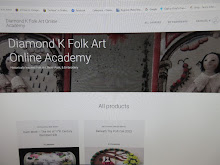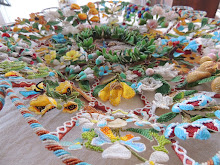A Real Treat!
Do you know what these are? Chances are you may know of them ...but have you actually seen any before? I have been wanting to share these little gems with you for some while, but honestly its been very hard for me navigating around my post covid headaches....not a minuscule bit of how bad my headaches were when I was sick, but when I get one I just cant seem to do anything by sit and stare out a window.I am tired of being a veg and am making myself get back to my old routines, and that means blogging~ so I have decided I will be blogging and sharing every few days no matter how I feel...coherent or not. I don't know exactly what my purpose here on earth is, all I know is that I love sharing what I love with others~ and I know you will love these little pins. They really are gems, every last one.
It is hard to believe that a small straight pin we take for granted today and pretty much only use for sewing, was a huge and important industry as recent as the 18th c. Empires were made from making and selling these little pins~ its true! Not only were pins used mainly for the fastening of every day clothing on the body, but they were also commonly used for fastening papers together. Jane Austen used pins to fasten her manuscripts together...she also used pins to attach new paper over markout areas that she wanted to rewrite. There were no paperclips or staples back then. Straight pins were a very important part of everyday life....so it is easy to question that for something so important, why are there not scads of them extant in all sorts of collections? Just think of what you use every day, that is so common to you, that you would never think to save it. Why would you need to, you use it every day.
Up until the first quarter 19th c pins were made by hand. Quite a laborious system. There were up to 18 different steps in making a single one. Every point was sharpened by hand with help of a Pinner's Bone~ it was usually a scrap of bone with a groove in it that held the pin while the end was being sharpened. If you are a fan of mudlarking these are often found along the shores of the Themes in London...along with pins themselves. Pins came in all different sizes, and there were names for the different sizes. (If you would like to see some really thick Middling, or Long White size pins in an 18th c pincushion just click here!)The heads were made separately of a similar diameter wire as the shaft, and was coiled around it. Depending on the time period, some were coiled, some were coiled and crimped...and still some were coiled and soldered on with flux. The fluxing was a particularly stinky and toxic process. The heads of the pins could be sharp themselves and often snagged the clothing they were place into, as well as scratching the user.






























4 comments:
I have seen collections of these pins at the Bodleian Library in Oxford. They carefully preserve them.
Thankyou Victoria~ Are they complete in their papers??? I will have to go and check~ many thanks!
Enjoyed reading this post. We still get pins arranged in papers in our place.
Enjoyed your post. I think you always give us topics we can learn from. I have never seen these pins. Thanks.
Post a Comment